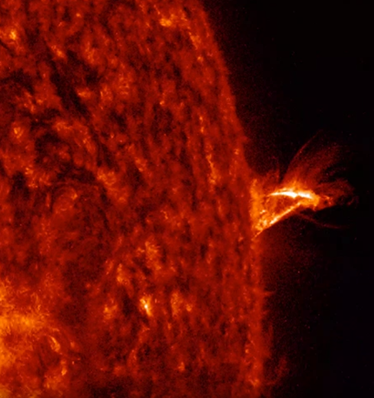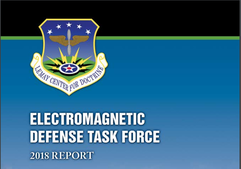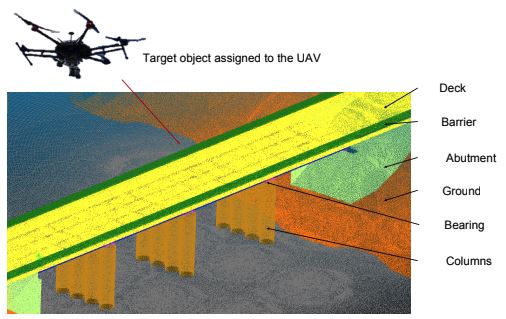|
As part of its Critical Infrastructure Reentry and Situational Awareness Project (CIRSAP), the CRDR held a workshop on September 4, 2019 in Salem, Oregon. Over 80 public and private sector stakeholders from Oregon and around the region participated in the workshop focused on Unmanned Aircraft Systems (UAS), or drones. The workshop sought to highlight the current state of UAS usage within the State of Oregon and identify opportunities to collaborate more effectively between the public and private sector on drone usage and utilizing drones for situational awareness. The workshop brought together attendees and speakers from drone companies, industry associations and organizations, first responders, law enforcement, state and federal agencies, municipalities, emergency managers, and stakeholders from both the public and private sector.
The workshop was funded by a grant from the Department of Homeland Security’s (DHS) National Infrastructure Protection Plan (NIPP) Challenge Grant program. Oregon is one of four states that participated in the CRDR's Resilience Challenge Grant project. Learn more about the CRDR's Resilience Challenge Grant project here.
0 Comments
On August 28, 2019, the Center for Regional Disaster Resilience (CRDR), and the Montana Division of Disaster and Emergency Services held a statewide event in Helena, Montana. Fifty stakeholders gathered from emergency management, precision agriculture, transportation infrastructure, forest management, and other public and private sectors. The half-day workshop focused on Unmanned Aircraft Systems (UAS) situational awareness and featured presentations from drone manufacturers, experts and pilots from private companies, academia, and the State of Montana government. The purpose of the workshop was to educate stakeholders on current UAS policy, understand the use of UAS in Montana, and discuss utilizing UAS for improved situational awareness.
The workshop was funded by a grant from the Department of Homeland Security’s (DHS) National Infrastructure Protection Plan (NIPP) Challenge Grant program. Montana is one of four states that participated in the CRDR's Resilience Challenge Grant project. Learn more about the CRDR's Resilience Challenge Grant project here. Over 100 public and private stakeholders from across Idaho gathered in Boise on June 5, 2019 for the first statewide workshop focused on utilizing Unmanned Aircraft Systems (UAS) for situational awareness. This effort brought together many sectors including law enforcement, emergency management, transportation, communications, emergency services, fire, search and rescue, and higher education research as well as private sector agriculture and infrastructure such as rail, communications, power, and utilities.
The workshop was funded by a grant from the Department of Homeland Security’s (DHS) National Infrastructure Protection Plan (NIPP) Challenge Grant program. Idaho is one of four states that participated in the CRDR's Resilience Challenge Grant project. Learn more about the CRDR's Resilience Challenge Grant project here. The Coronal Mass Ejection Long-term Power Outage workshop was held in Seattle, Washington on May 23, 2019. Funding was provided by the Washington State Homeland Security Region 6 Critical Infrastructure Working Group from the FFY 2017 State Homeland Security Program from the Department of Homeland Security via Washington State Military Department and King County Office of Emergency Management. It was designed as a full-day workshop that included speakers presenting information on the Coronal Mass Ejection (CME) hazard and warnings systems, impacts from regional power outages, current planning efforts and engagement of the audience in breakout discussions exploring how to address the hazard and mitigate potential impacts. This interdependencies workshop focused on a long-term electrical system blackout caused by a CME event striking North America. While most power outage planning revolves around other natural hazard events like windstorms, earthquakes, or terrorism, this exercise took a look at a long-term power outage with widespread impacts to urban, suburban, and rural communities. While concentrating on critical infrastructure, the human impacts to people and systems such as our healthcare institutions was also included in the workshop. Participants were briefed on the current planning the Washington State Department of Commerce Energy Office is conducting on fuel prioritization and hybrid electrical systems. The Washington State Emergency Management Division provided insight on the catastrophic planning conducted by the State to address a CME scenario. NOAA Space Weather Prediction Warning Center estimates a G5 Geomagnetic Storm will cause the following types of impacts:
Associated Materials
Public and private stakeholders from around the region met in Seattle, Washington on May 7, 2019 for a workshop to discuss the use of Unmanned Aerial Systems (UAS) improve situational awareness of critical infrastructure post-disaster. In attendance were participants from across many sectors including law enforcement, emergency management, transportation, communications, emergency services, fire, as well as private sector agriculture and infrastructure such as energy, communications, power, and utilities.
86% of the nation’s critical infrastructure is owned and operated by the private sector. Therefore, there is a need for rapid damage assessment of these critical infrastructures immediately following a disaster. Emerging drone technology is allowing for an expedited and detailed damage assessment of infrastructures by owners and operators. The private sector needs to access to disaster zones to conduct damage assessments and then be able to share information rapidly with state emergency management agencies so that a common operating picture can be established. The workshop was funded by a grant from the Department of Homeland Security’s (DHS) National Infrastructure Protection Plan (NIPP) Challenge Grant program. Washington is one of four states that participated in the CRDR's Resilience Challenge Grant project. Learn more about the CRDR's Resilience Challenge Grant project here. Using Drones to Detect Damage to Bridges Workshop | Critical Infrastructure Inspection Project12/13/2018 Workshop SummaryThe Pacific Northwest Economic Region and its Center for Regional Disaster Resilience in partnership with Northeastern University’s Global Resilience Institute (GRI) were awarded a 2017 National Infrastructure Protection Plan (NIPP) Security and Resilience Challenge grant for critical infrastructure. Held in Lakewood, Washington, this workshop presented the results of the technical research team (GRI) at utilizing self-directed drone technology (algorithms) and LIDAR to inspect damaged bridges in a post disaster scenario.
The Pacific NorthWest Economic Region (PNWER) and its Center for Regional Disaster Resilience (CRDR) were awarded a 2018 National Infrastructure Protection Plan (NIPP) Security and Resilience Challenge grant for critical infrastructure. With this grant, the CRDR sought to develop methodologies to allow for the rapid inspection of critical infrastructure in post-disasters using drones --also called Unmanned Aerial Systems (UAS). This information would then be shared with state-level emergency management agencies to establish better situational awareness and a common operating picture. The CRDR invited four states to participate in the project: Idaho, Montana, Oregon, and Washington. The first goal was to establish a working group of interested public and private sector infrastructure owners and operators within each state. A public-private, stakeholder-led workshop was then held in each state which provided the opportunity for public and private critical infrastructure owners and operators to be briefed on and then share their needs and concerns about partnering with the government sector in their respective states. The feedback from each workshop was then incorporated into a Concept of Operations (CONOPS) for each state. Idaho Montana Oregon Washington See below for the project description, or read more here about the Project Team, Project Deliverables, and Stakeholder Commitment.
The Gap 86% of the nation’s critical infrastructure is owned and operated by the private sector. There is a need for rapid damage assessment of these critical infrastructures immediately following a disaster. Emerging drone technology is allowing for an expedited and detailed damage assessment of infrastructures by owners and operators. To accomplish this work requires that the private sector have access to disaster zones to conduct damage assessments and then be able to share information rapidly with state emergency management agencies so that a common operating picture can be established. Project Scope This project scope includes the development of plans, procedures, processes, and mechanisms for the collection and exchange of damage information. This information will assist both infrastructure owners and the public sector to obtain faster situational awareness on the status of their infrastructures, and other interdependent infrastructures that may impact their ability to provide services, and products to their customers. This information will be transmitted to state EOCs and used to create a common operational map that can be shared with the federal government, lower level jurisdictional organizations and the private sector. The intent is to work with four states in the Pacific Northwest: Idaho, Montana, Oregon, and Washington. These states will be invited to participate in the project. The first goal will be to establish a working group of interested public and private sector infrastructure owners and operators within each state. Then there will be a public-private stakeholder led workshop for each of the four states. These will be sessions that invite public and private CI owners and operators to be briefed on and consider their needs and concerns about partnering with the government sector and their respective state. The outcome of the workshop will ideally be the initial formation of operational concepts that will be incorporated into a CONOPS for that state. A CONOPS for access into disaster zones and the sharing of information will be prepared for each state. As part of this CONOPS, the process for private sector CI owners to gain access into disaster zones will be formulated for each state. This element of the CONOPS will use the existing state access control methodologies that they have in place or develop a simplified process for access so that drones can be used to gather damage assessment information. The CONOPS will also specify the communications channels and data file type for transmission. A demonstration drill will be conducted in one state, with one infrastructure owner and operator that implements the CONOPS. This drill will use the established process for a private CI owner to obtain access to a disaster zone, fly a simulated damaged area with a UAS, and transmit simulated disaster damage information to the state Emergency Operations Center (EOC). The above drill will be open to observers from other infrastructures and state emergency management officials. Lastly, the longer-term goal is to demonstrate this UAS to EOC situational awareness feed at scale in real-time during the Cascadia Rising II exercise planned for 2022. Workshop OverviewThe Center for Regional Disaster Resilience (CRDR) and the Pacific NorthWest Economic Region, in partnership with the Washington State Department of Transportation Aviation Division, organized a workshop geared towards working professionals in the local and state government and the private sector. The workshop focused on applications of unmanned aerial systems (UAS)/drones in Washington State and featured expert speakers, UAS users, and interactive discussions. Read the report here. OutcomesDevelopment of a regional UAS working group Inventory of activity in Washington State Identify policy, legislative and regulatory opportunities and hurdles Technical guides and references for attendees by Northeastern University's Global Resilience Institute Press ReleasePress Release from Washington State Department of Transportation July 5, 2018
Speaker PresentationsUsing LAANC For Unmanned Aerial System Pilots
The Pacific Northwest Economic Region (PNWER) and its Center for Regional Disaster Resilience (CRDR) in partnership with Northeastern University’s Global Resilience Institute (GRI) were awarded a 2017 National Infrastructure Protection Plan (NIPP) Security and Resilience Challenge grant for critical infrastructure. The project sought to develop technologies for UAS (drone) employment to technically inspect critical infrastructure in post disaster scenarios. Read the project description here. The GapThere is a need for rapid damage assessment of critical infrastructure immediately following a disaster. Emerging UAS technology is allowing for an expedited and detailed damage assessment of infrastructure such as bridges and other steel and concrete structures within the built environment. Project ScopeThis project investigated the technical capabilities of UAS to enhance the efficiency, fidelity, speed and safety of current critical infrastructure inspection methods by using machine intelligence. The policy, legislative and regulatory opportunities and hurdles were also identified. Outcomes
Technical guides and references for attendees by Northeastern University's Global Resilience Institute Events and ReportsProject Wrap-up: Critical Infrastructure Inspection Project Using Drone to Detect Damage to Bridges Workshop When: December 13, 2018 Where: Puget Sound Area More information HERE Report HERE Establishing a Professional Micro-Aviation (Drone) Program When: October 23, 2018 Where: Webinar More information HERE Report HERE Exploring Government and Private Sector Applications of UAS/Drones in Washington When: June 28, 2018 Where: Lakewood, Washington More information HERE Report HERE 2018 Pacific Northwest Disaster Resilience Symposium When: July 23, 2018 Where: Spokane, Washington More information HERE Report HERE ContactsEric Holdeman, Director, CRDR,
253-376-6683, [email protected] Philip Anderson, PhD, Associate Director for Research and Innovation, GRI, (703) 772-0132, [email protected]
When: February 16, 2017
Where: Lakewood WA, 98499 Government personnel, critical infrastructure managers and major employers put their understanding of cyber threats and resources into action Thursday, February 16 at the Emerald Down V Regional Cybersecurity Exercise. The daylong exercise held at the Clover Park Technical College brought together 133 attendees looking to improve their organizations' cyber plans, build relationships with other regional technology and security practitioners, and practice community cyber security response within an interactive cybersecurity board game. The game is one in a series of Sand Table Resilience Games created by James Rollins, Managing Partner at Takouba. This cybergame simulates methods used by different types of hackers to access and exploit a network, such as a phishing attack for sensitive information. Network defenders then use tools and policies to try and stave off attacks, and can call for help from available resources. "We're not looking for winners and losers. We want participants to understand how the types of cyberattacks that might occur and what tools they have to counter them," said Eric Holdeman, director of the Center for Regional Disaster Resilience (CRDR). "The goal is for guests to learn how to report a cyber attack, who can help and what resources they might expect in response." Holdeman said a main theme of the exercise is to develop community cybersecurity response capability, where public and private entities are encouraged to securely share information on an attack to alert each other and hopefully and collectively or find solutions. "A growing number of attacks are not immediately detected. If businesses and governments can share information about an ongoing problem, they have a better chance to collectively develop a patch or counter as a coordinated whole instead of reacting as individual organizations," Holdeman said. This year marks the fifth Emerald Down cybersecurity event organized by the CRDR in support of the public-private partnership efforts being led and funded by the King County Office of Emergency Management, and their Critical Infrastructure Committee. "Today's exercise brought together a wide array of stakeholders to focus on improving preparedness and resilience to the growing threat of cyber intrusions," said Walt Hubbard, director of King County Office of Emergency Management. "This is a great example of what we're striving to achieve in all areas of emergency management in King County." Exercise features: Free cyber incident response template Interactive scenario based board game Discussion on viability of emergency cyber credentialing system In attendance:
More information |
Categories
All
Archives
October 2021
|





